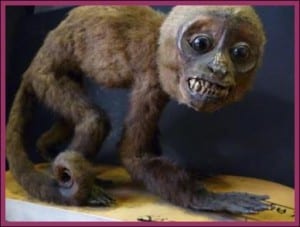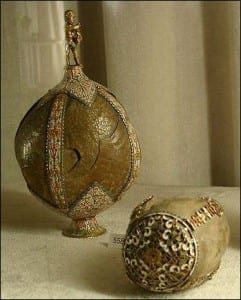Specimen of the Week: Week Forty-Three
By Emma-Louise Nicholls, on 6 August 2012
 Everyone is so excited about the Olympics that it was tempting to choose something obvious for Specimen of the Week such as the bronze-winged jacana, the silver brush-tailed possum, or the golden mole. Instead however, I decided to go for something equally (tenuously) related to the Olympics but just a little less prosaic. Instead of focusing on the medals (because as we know it’s only really about the taking part), I thought I’d introduce you to the tools of the Olympian trade. Or some of the trades. Items similar to the Specimen of the Week are used in tennis, football, basketball, ping-pong and shot put. Any ideas? (I said it was tenuous.) This week’s specimen of the week is…
Everyone is so excited about the Olympics that it was tempting to choose something obvious for Specimen of the Week such as the bronze-winged jacana, the silver brush-tailed possum, or the golden mole. Instead however, I decided to go for something equally (tenuously) related to the Olympics but just a little less prosaic. Instead of focusing on the medals (because as we know it’s only really about the taking part), I thought I’d introduce you to the tools of the Olympian trade. Or some of the trades. Items similar to the Specimen of the Week are used in tennis, football, basketball, ping-pong and shot put. Any ideas? (I said it was tenuous.) This week’s specimen of the week is…
**!!!The Cow Furball!!!**
1) Cats, rather than Olympians, are probably the first animal that spring to mind when we speak of furballs. However, many other animals also produce them, they are not specific to felines. Species that graze and then ‘chew the cud’ are particularly susceptible to furballs. ‘Chewing the cud’ is when you return your food from the stomach to the mouth, in order to chew it a second time. Grass is pretty indigestible on the whole and so animals such as cows, need to chew and swallow more than once in order to break it down.
2) Cud-chewers are particularly susceptible to indigestible material accumulating within the stomach. When an animal of this nature finally digests the food and passes it to the next organ in the digestive process, some material cannot squeeze through the narrow opening to the large intestine. I hope you’re not reading this over lunch. This material subsequently accumulates and forms a ‘ball’. Whilst felines can vomit up these balls, ruminants can not. This means that they stay in the stomach, accumulating mass. Unfortunately hairballs from cows can therefore only be obtained once the animal has passed on to the great cowfield in the sky. The largest known cow hairball is the size of a basketball and is on display in Kansas.
3) Technically, this ball is called a bezoar. This is a better term than hairball, or furball, as the bezoars don’t have to be made of hair, they can also form due to ingestion of non-digestible food stuffs such as celery, grape skins and chewing gum. Yes I’m afraid your mum was right when she told you not to swallow your gum.
4) The word ‘bezoar’ comes from the Persian word for ‘antidote’. In the past, people from the Middle East would grind up animal hairballs to make cures for poison, epilepsy, and the plague. This practice was introduced to Europe in the 11th Century.
5) During the Middle Ages, when inspiration for home decor was was limited to things you could find lying around, hairballs were decorated with gold and jewellery and kept as objects of value. “Welcome to my humble home dearest friend, settle yourself by the fireplace and admire the intricate decorations of gold expertly arranged on my yacked up ball of gunk”. Yummy.
 Close
Close




